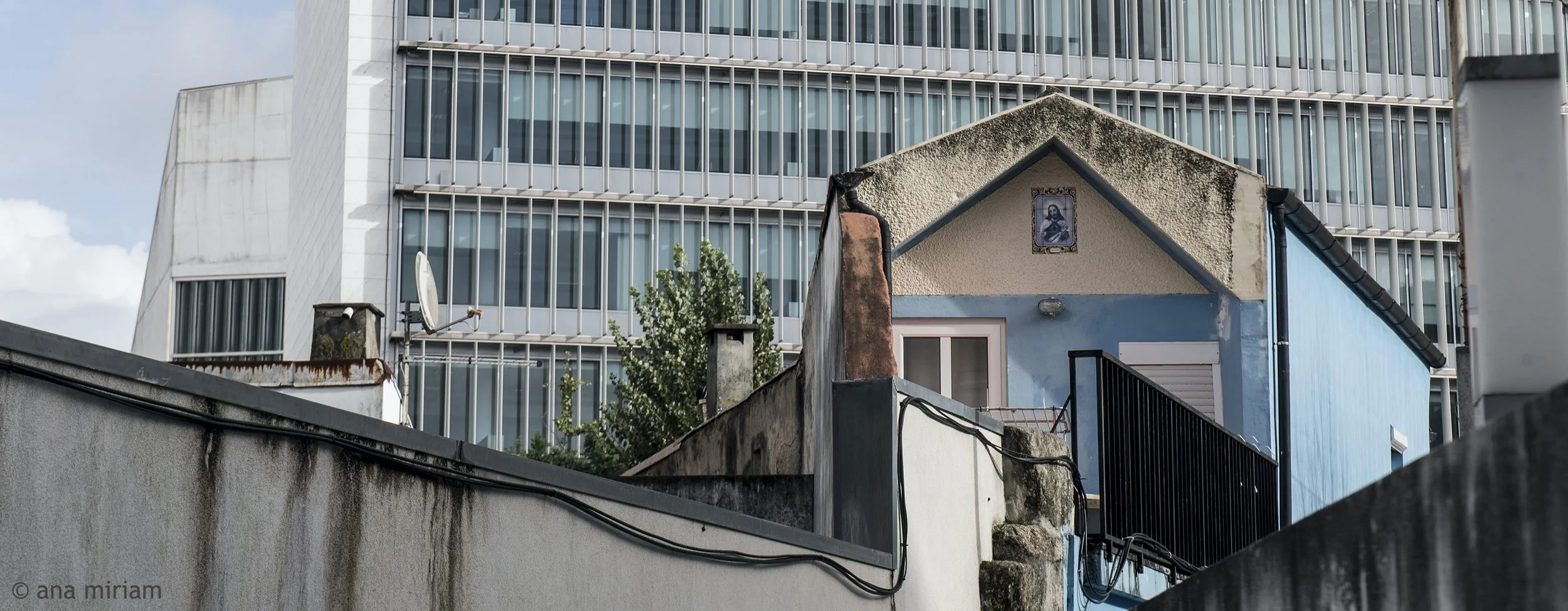FAUP | Applications until 25 September 2025
CONTINUING EDUCATION COURSE “PHOTOGRAPHY AS A TOOL FOR INTERPRETING AND REPRESENTING ARCHITECTURE AND URBAN SPACE”
ONLINE APPLICATIONS [29 August - 25 September 2025] - FAUP SIGARRA - Applications via the WEB through the URL: https://s.up.pt/b2ak
CONTINUING EDUCATION COURSE AT FAUP
“PHOTOGRAPHY AS A TOOL FOR INTERPRETING AND REPRESENTING ARCHITECTURE AND URBAN SPACE”
Presentation
The use of photography as a research tool is now widespread in the humanities, art and architecture, to document and interpret major contemporary urban themes, from housing to public space, from inclusion to sustainability. As a universal language, photography facilitates interdisciplinary approaches that are indispensable for a deeper understanding of the complexity of contemporary urban transformation dynamics.
The overall objective of this continuing education course is to enable participants to use photography as a tool for interpreting and representing architecture and urban space. In this sense, the specific objectives are:
- To equip trainees with photographic skills focused on architecture and urban space
- To provide strategies and references for critical and prospective observation and interpretation of urban space
- To equip trainees with visual communication skills through different ways of associating images in different media
The course consists of two autonomous training modules, which can function independently or complementarily, and are also offered separately (only in the second phase of applications). The first module is predominantly technical in nature, incorporating a small design component in which the techniques covered are put into practice. The second module focuses on project development and the use of photography as a research tool.
The course will feature guest speakers and a space for dissemination on the Scopio Network platform.
Trainer: Ana Miriam Rebelo
Scientific Supervision: Professor Pedro Leão Neto
Target audience
The course is aimed at a multidisciplinary community whose main interest lies in architecture and urban space, whether as a field of practice, a subject of research or a theme for artistic creation. The course therefore welcomes university students, researchers and professionals from various fields – from architecture and urban planning to visual arts and social sciences – as well as other people interested in photography, architecture and urban space.
The aim is to promote a participatory multidisciplinary environment, encouraging the exchange of knowledge and experiences between different areas of knowledge and enriching perceptions about the dynamics of production, use and appropriation of urban space.
Organisation and operation
Number of places: 15
Module 1 - Photographic technique applied to the representation of architecture and urban space
Programme content
- Exposure: aperture control, shutter speed, sensitivity
- Lenses and focal length
- Managing available light (exterior and interior): light quality and direction; white balance
- Support equipment: filters and tripods
- Communication project: sequencing and relationships between images
Workload: 6 sessions | 18 contact hours
Calendar: 17 October to 21 November 2025
Timetable: Fridays - 3pm > 6pm
Mode: face-to-face
Language of communication: Portuguese
2 ECTS
Module 2 – The photographic device as an instrument for investigating urban space.
Programme content
- Photography and research: photography as a means of documentation and as a discursive practice in the investigation of urban space
- Authors and reference works: different approaches and strategies between research and artistic practice
- Visual ethnography practices
- Strategies for analysing and exploring space: photography as a discursive element that constructs meanings about spaces, architecture and society
- Visual narrative: construction of photographic discourses in digital and printed format
Workload: 11 sessions | 33 contact hours
Calendar: 20 February to 22 May 2026
Timetable: Fridays - 3pm > 6pm
Mode: face-to-face
Language of communication: Portuguese (PT)
4 ECTS
Applications
Applications Full course – 29 August to 25 September 2025
Publication of provisional results: 29 September 2025
Hearing of interested parties: 30 September to 13 October 2025
Applications for the first module (remaining places) – 30 September to 08 October 2025
Publication of provisional results: 09 October 2025
Hearing of interested parties: 10 to 23 October 2025
Publication of final results: 24 October 2025
Enrolment and registration: 27 to 29 October 2025
APPLY FOR THE FULL COURSE HERE
Ranking:
Candidates will be ranked based on the evaluation of the following elements, which must accompany the application:
1. Letter of motivation (70 points);
2. Photographic portfolio (5 to 10 images) (30 points).
a) Priority will be given to trainees who wish to enrol in the full course.
b) If there are any remaining places, they will be made available individually in a second selection phase.
c) Tiebreaker criterion: interview.
Prerequisites and required materials:
- Ability to attend higher education.
- Digital camera, preferably with manual or semi-automatic settings.
- Laptop computer.
Tuition fees:
Full course
1. UP students, lecturers and staff: €230
2. U.Porto alumni: €280
3. General public: €320
Module 1
1. UP students, lecturers and staff: €80
2. U.Porto alumni: €100
3. General public: €120
Module 2
1. UP students, lecturers and staff: €150
2. U.Porto alumni: €180
3. General public: €200
School insurance: €2.00
Biographies
Ana Miriam is a photographer, researcher and professor in the field of visual arts and visual culture. She graduated in Fine Arts at École d'Enseignement Supérieur d'Art de Bordeaux (2005). She holds a Master in Contemporary Artistic Creation from the University of Aveiro (2019) and a PhD in Design from the University of Porto (2025), funded by Fundação para a Ciencia e a Tecnologia. She is currently a teacher and researcher at the Faculty of Arts and Humanities of the University of Porto. She is a member of the Center for Studies in Architecture and Urbanism (CEAU) and Research Institute for Design, Media and Culture (ID+). Her artistic and scientific production, disseminated through communications, publications and exhibitions, focuses on the production, perception and representation of urban space, with an emphasis on informal dynamics of production and use of public space.
More information at FAUP SIGARRA - Applications via WEB

